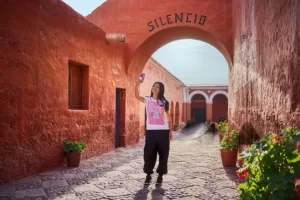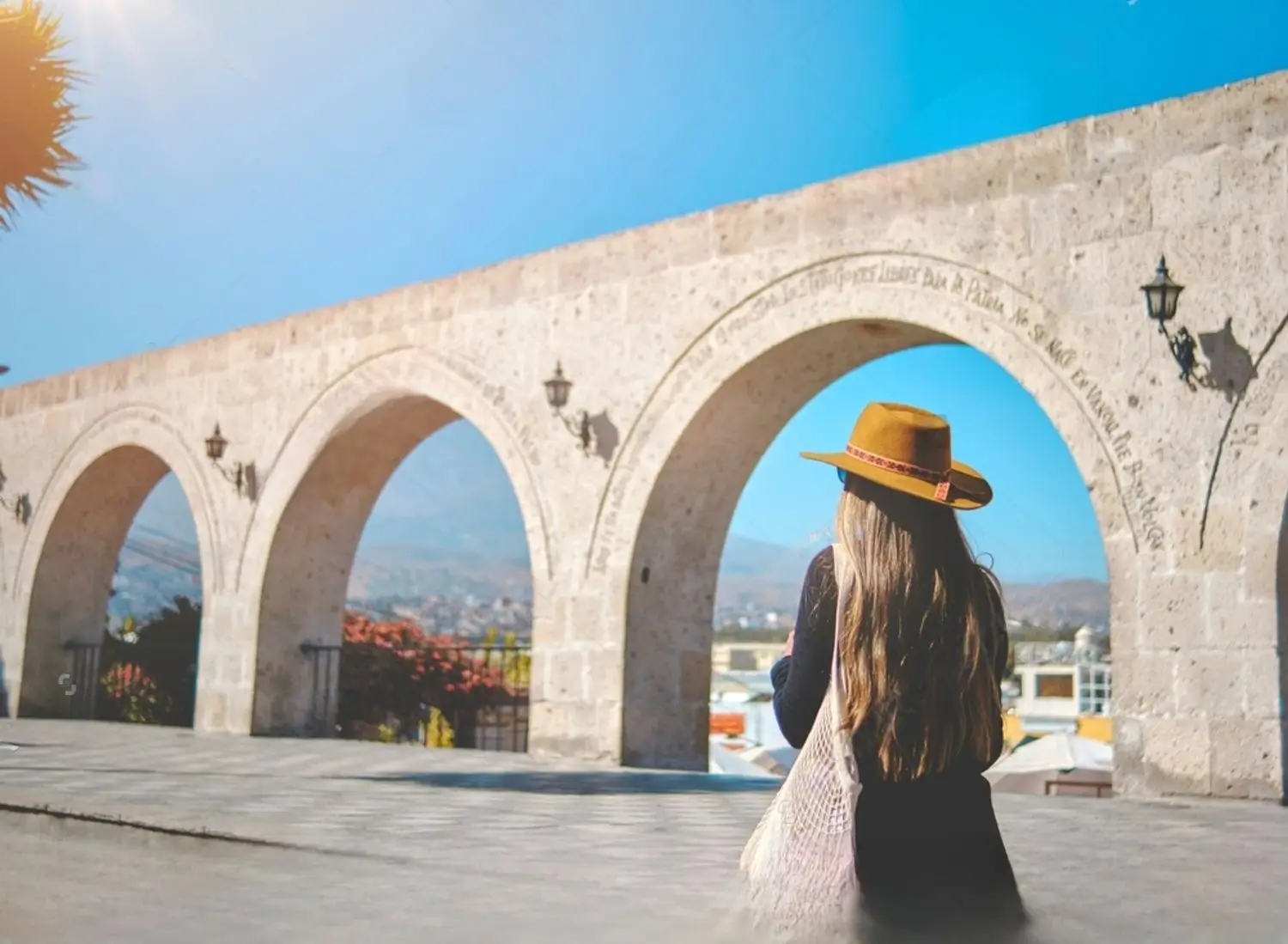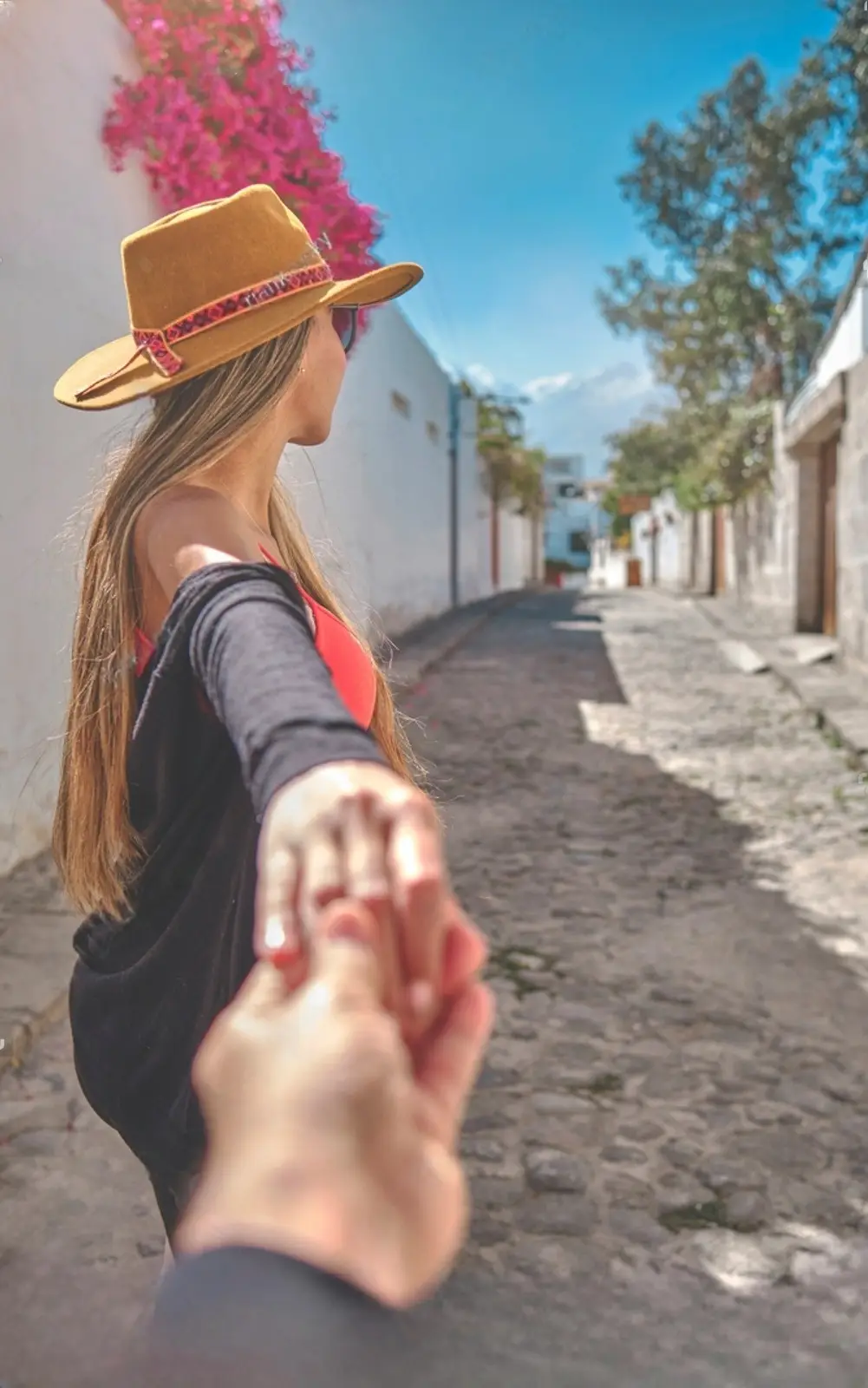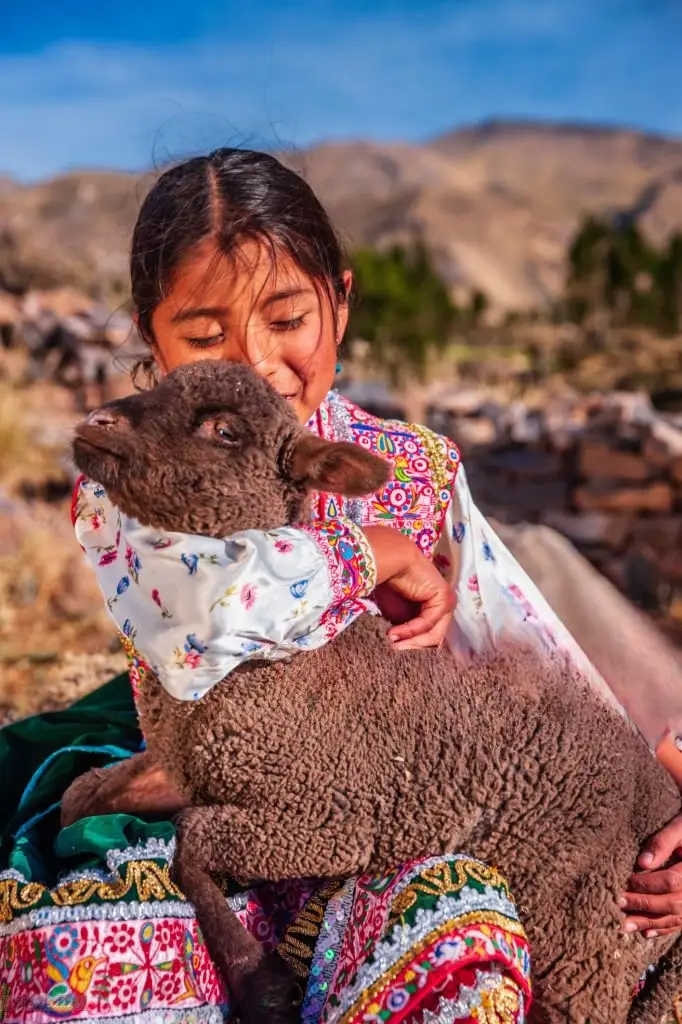

Arequipa, Peru's second largest city and a busy commercial city, is located in a valley at 2,360 m above sea level on the slopes of the active Misti volcano, one of three volcanoes surrounding the city. Founded by the Spanish as early as 1540, the city is built of white volcanic stone, has beautiful colonial architecture and a dry, temperate climate year-round.
Arequipa and Colca Canyon are two tourist destinations that are usually visited together. However, it is possible to visit Arequipa and not visit the Colca. Arequipa is the perfect first stop on a trip to Peru, as it provides gradual acclimatization to the altitude. You can fly from Lima: 1 hour flight. You can drive from Lima via Nazca. This is also a popular approach.
Time in Arequipa is usually spent visiting the convent of Santa Catalina, its beautiful main square, the Jesuit church of La Compañía and the museum with Inca mummies. One day is enough to visit the city. From Arequipa you can continue your journey through southern Peru, there are flights here to Cuzco and Juliaca. Alternatively, you can drive to the Colca and on to Puno, in the Lake Titicaca area.
During the drier seasons, May through October is ideal. Travel from November to March can include heavy downpours.
Recommended for
Getting to know the culture
Experiences to consider
A tour of the city of Arequipa, its main attractions and surroundings.


The Colca Valley and Canyon comprise one of Peru's most dramatic and spectacular natural landscapes. Here, the Colca River—recognized by National Geographic's latest survey as the source of the Amazon—carves a sensational scar through the mountains for over 50 kilometers. It is surrounded by a lost paradise of Spanish villages with churches weathered by earthquakes and local women still dressed in voluminous Andean skirts and colorful hats.
Colca Canyon is said to be the world's deepest, first visited by scouts in the 1980s. Prior to that, the area had been largely forgotten for centuries and was only "rediscovered" between wars by an American mapping expedition.
The Colca is home to the Cabana - Quechua people of the valley and the Collagua, highland people; each wearing distinct types of hats. Their ancestors have lived in the Colca since pre-Inca times, as evidenced by the agricultural terraces—continuously in use for over 1,000 years—that cover much of the valley and create a giant sculpted landscape.
The fourteen Spanish villages in the valley and canyon each possess a church with an impressive and surprisingly rich Baroque interior. Catholic faith with a deep Andean tone is strong in the Colca, and festivals are celebrated with great fervor.
Colca Canyon is most commonly visited in conjunction with the city of Arequipa.
During the drier seasons, from May to October, is ideal. Traveling from November to March may include heavy rainfalls.
Recommended for:
- Adventurers
- Nature lovers
- Cultural enthusiasts
Experiences to Consider:
- A three-day tour of Colca Canyon and its main attractions
- Horseback riding in the Colca Valley
- Condor watching
- Visits to colonial churches
